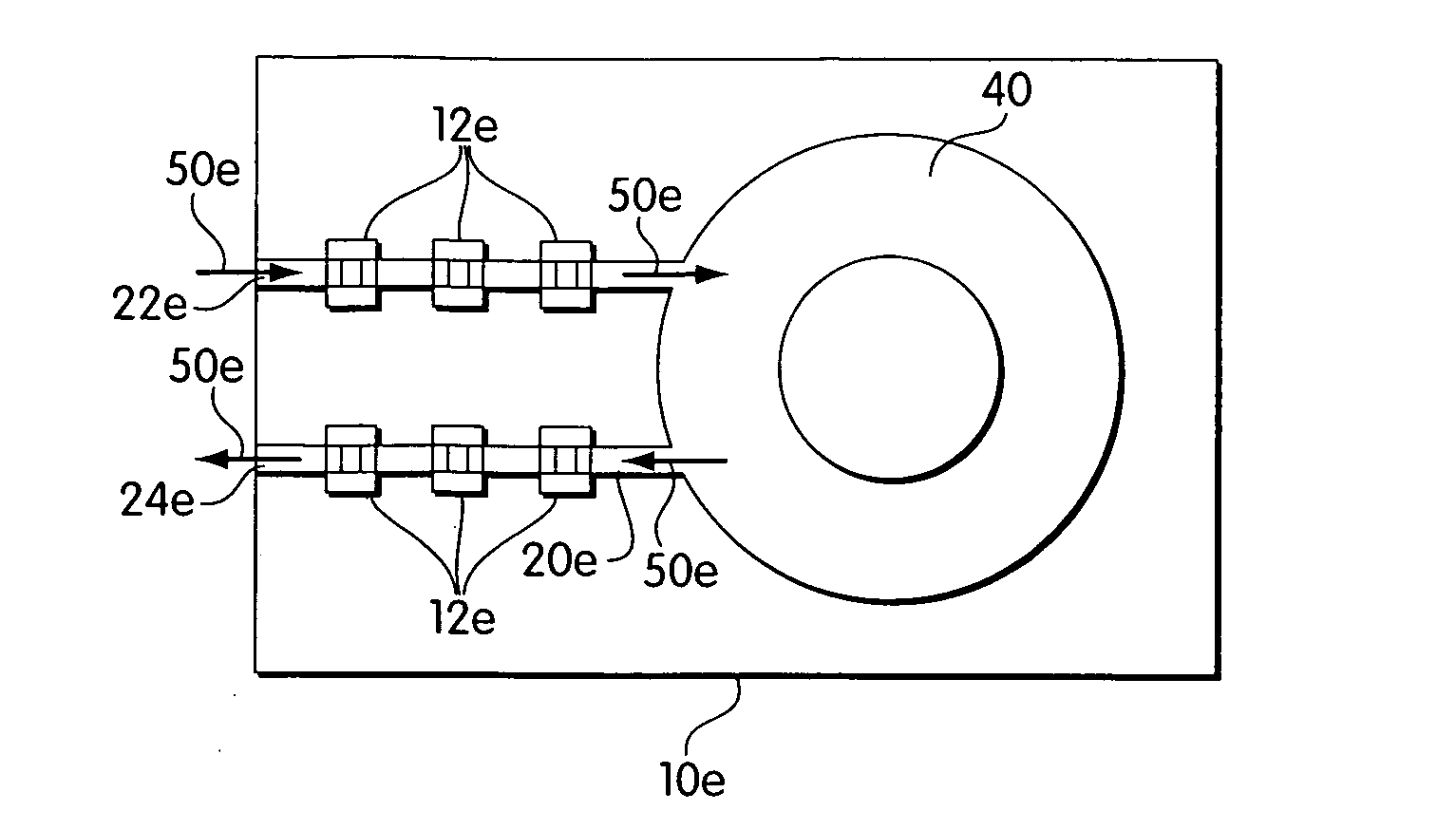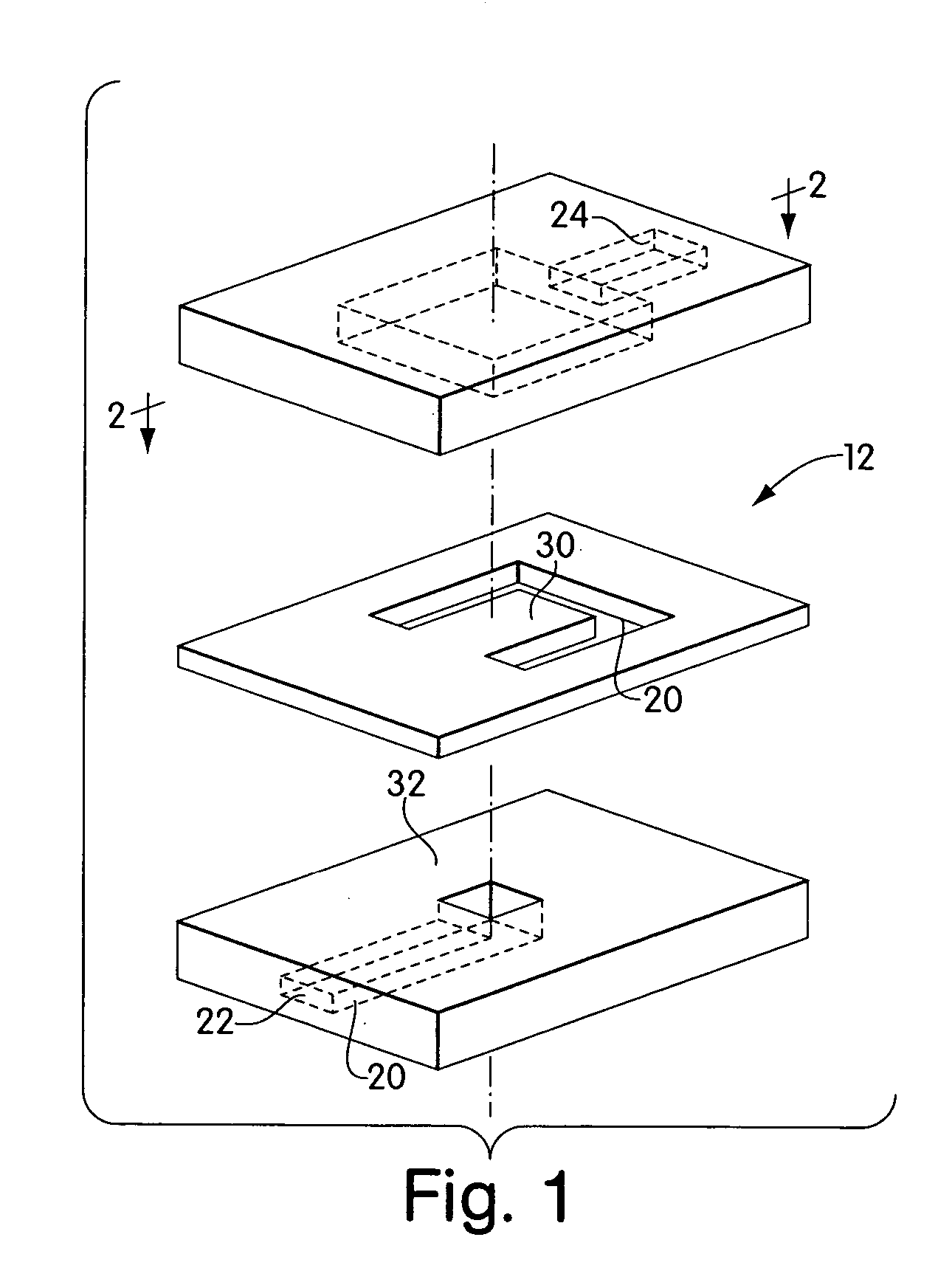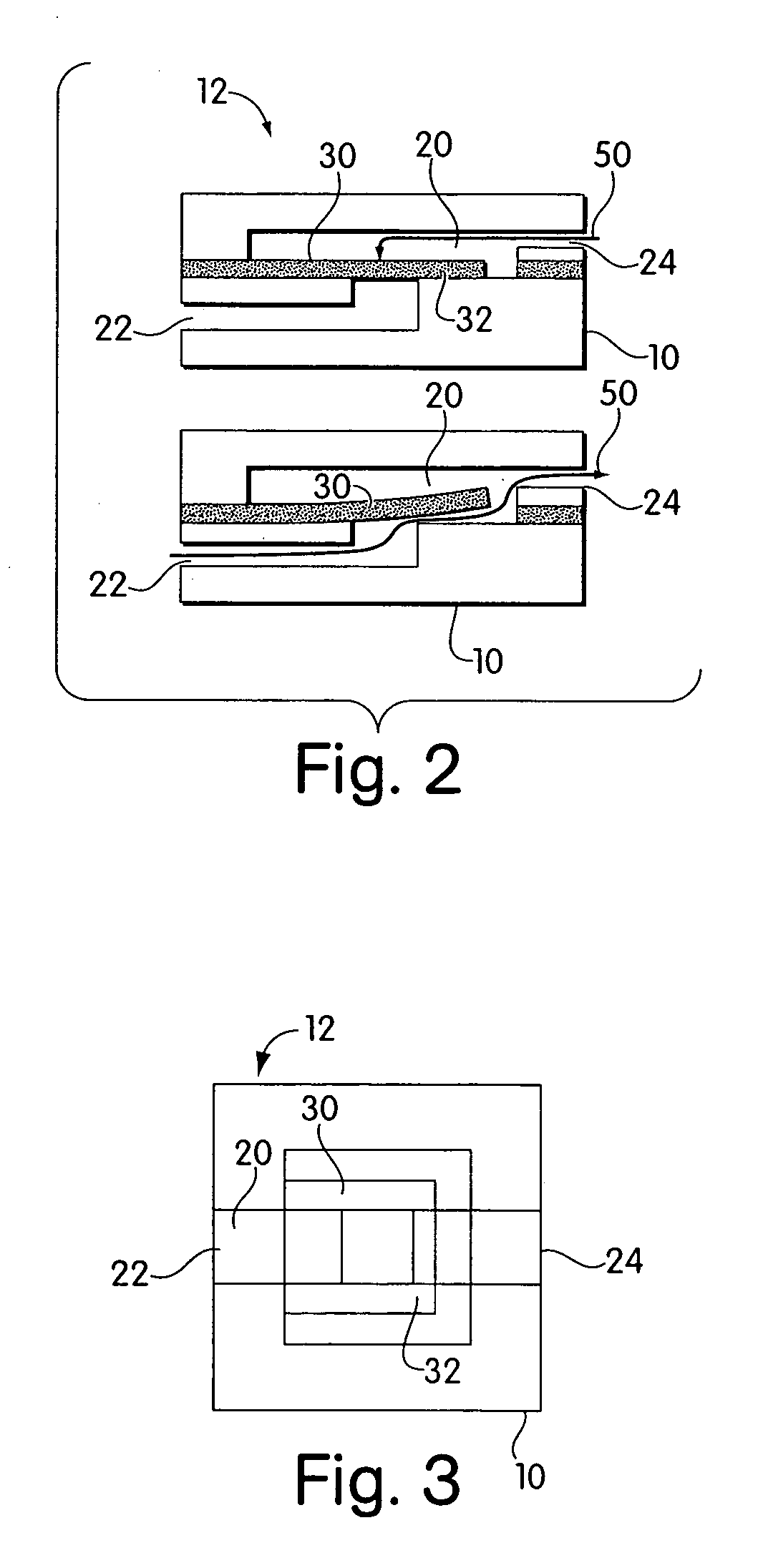Valves and pumps for microfluidic systems and method for making microfluidic systems
a technology of microfluidic systems and valves, applied in the field of microfluidic systems, can solve problems such as system design and manufacture challenges
- Summary
- Abstract
- Description
- Claims
- Application Information
AI Technical Summary
Benefits of technology
Problems solved by technology
Method used
Image
Examples
example 1
[0113]A rapid prototyping method was used for the design and fabrication of microfluidic valves and pumps. First, high-resolution transparencies were produced from a CAD file containing a design of fluid paths. These transparencies were used as masks in transferring the design into negative photoresist by conventional photolithography, yielding a master with positive relief of fluid paths.
[0114]The valves were made from two molded PDMS bas-relief plates and a membrane. As illustrated in FIG. 18, the parts were fabricated separately and later assembled to complete the valves. First, one PDMS bas-relief plate was constructed (a) by replica molding against the master using procedures known in the art.
[0115]A PDMS membrane was constructed (b) by casting and curing the PDMS prepolymer between a master and a secondary master in the form of a Teflon® PTFE sheet (1 mm thick Teflon® FEP, DuPont, Del). Modest pressure (1 psi) was applied to the secondary master / PDMS / master sandwich while curi...
example 2
[0118]Microfluidic systems incorporating one-use valves were constructed of two layers, one layer with embedded fluid paths and one flat layer. To fabricate the layer with the fluid paths, PDMS was molded against a photolithographic master produced by rapid prototyping and comprising a positive relief of photoresist on a silicon wafer. (See “Rapid Prototyping of Microfluidic Systems in Poly(dimethylsiloxane).”Anal. Chem. 1988, 70, 4974-4984.) Holes were cut in the PDMS using circular punches to form fluid reservoirs. The layer with fluid paths was sealed against a flat piece of PDMS or a glass slide by oxidizing both layers in an air plasma and then bringing them into conformal contact. The plasma oxidation used in the sealing process rendered the channels hydrophilic, and they were readily filled with aqueous buffer. Dead-end channels filled by capillary action in less than 5 minutes. The microfluidic systems included of at least two disconnected channels separated by 20 μm closing...
example 3
[0119]The valves constructed in Example 1 were tested for long-term operation using an external three-way electromechanical valve (Lee Valve, Westbrook, Conn.) connected to a pressurized air source (functionality of the valves was tested with liquids before and after long-term testing with pressurized air). The inlet of the valve was connected to the electromechanical valve which pressurized and vented the valve at ˜10 Hz. The outlet of the valve was submerged in a water bath and the generation of a bubble with each opening and closing was monitored. The PDMS diaphragm valves were tested continuously for 105 openings and closings. The valves did not show any marked deterioration and were fully functional when tested with fluids (water).
[0120]Both diaphragm and flap valves were still fully functional when tested after storing them for six months in the open laboratory. Only the valves that had dried solids around the membrane that could not be removed were not functional. The ones wi...
PUM
 Login to View More
Login to View More Abstract
Description
Claims
Application Information
 Login to View More
Login to View More - R&D
- Intellectual Property
- Life Sciences
- Materials
- Tech Scout
- Unparalleled Data Quality
- Higher Quality Content
- 60% Fewer Hallucinations
Browse by: Latest US Patents, China's latest patents, Technical Efficacy Thesaurus, Application Domain, Technology Topic, Popular Technical Reports.
© 2025 PatSnap. All rights reserved.Legal|Privacy policy|Modern Slavery Act Transparency Statement|Sitemap|About US| Contact US: help@patsnap.com



